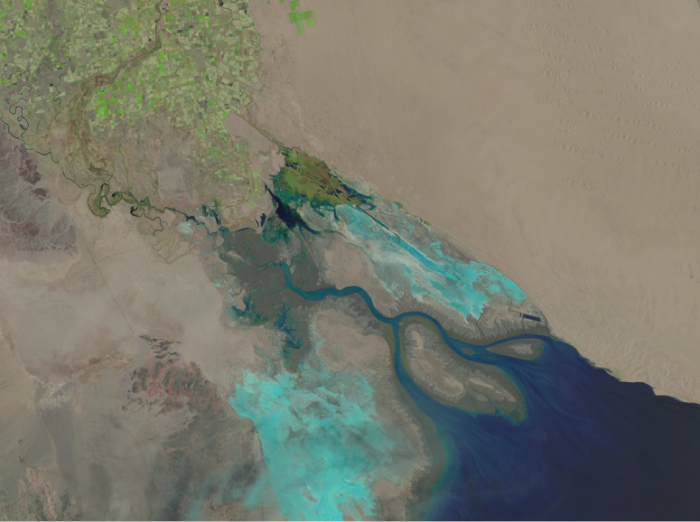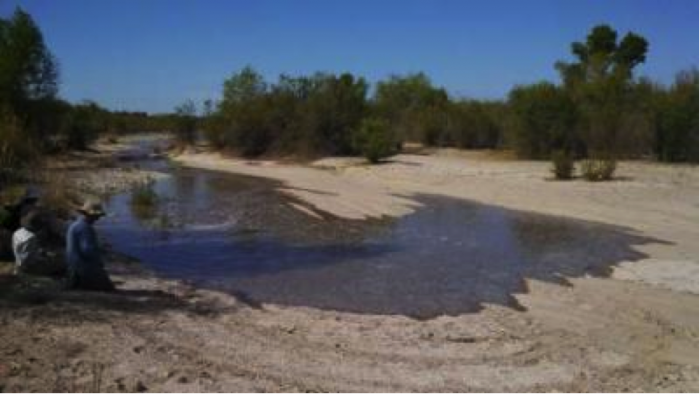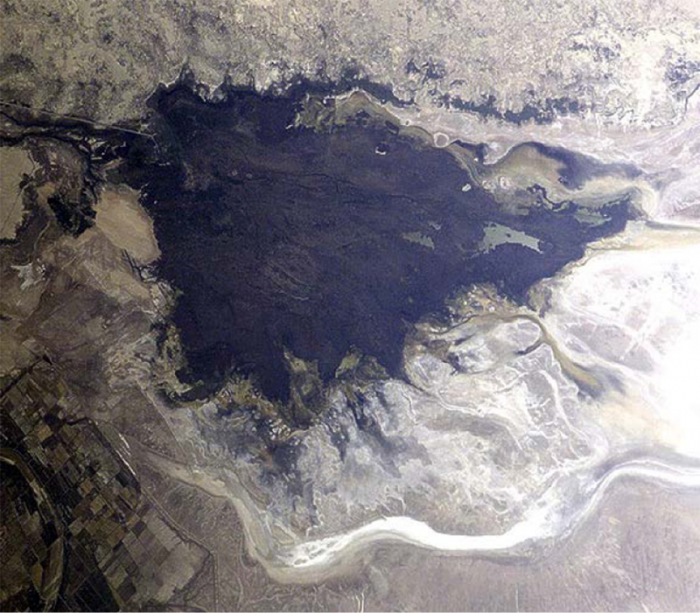The Colorado
Until the present, the U.S. has bypassed the requisite amount of water from the Colorado to Mexico every year, regardless of the total flow of the Colorado. Because of recent severe droughts in the southwestern U.S., however, a 5-year Agreement (Minute 319), signed in 2012, was brokered that allows the U.S. to reduce the amount of water shared with Mexico when Colorado River flow was much lower than normal. In that agreement, Mexico, which has little Colorado River storage capacity (only Morelos Dam and reservoir), will be allowed to store some of its surplus water in Lake Mead, behind Hoover Dam. In addition, the U.S. will help finance improvements to Mexico's water infrastructure ($21 million), which was badly damaged by an earthquake in 2010, and pledged to "reconnect" the Colorado River with the Gulf of California. The U.S. and Mexico committed to each supply 5,000 acre-feet of water a year to the delta. This year (2014), because of the Agreement, a "pulse flow" event occurred whereby, in March, nearly 105,000 acre-ft of water was released from Morelos Dam (Mexico) to restore (at least briefly) flow to the Colorado River Delta in the Gulf of California (Fig. 5). The intent was to begin to restore riparian ecosystems along the Colorado River in Mexico.

Of interest is the fact that there was more to the water allocation Treaty of 1944. In that Treaty, both the amount and quality of water allocated to Mexico were stipulated. The TDS of waters released to Mexico had to be below 1000 ppm. Alas, the salinity of Colorado River water behind Morelos Dam was typically greater than that because of evaporation and irrigation return flow (leached salt from arid-region agricultural soils in southern Arizona) So, the U.S. built desalinization plant in 1975 near Yuma to treat water to reduce TDS to maintain the agreed-upon values behind Morelos Dam in Mexico (actually partly in Arizona) according to stipulations made by the International Boundary and Waters Commission (IBWC) in 1973. However, the plant was never put into operation because of a period of high flow and lower salinity on the Colorado River. During the period 1973 to 2006, all the return flow from agricultural operations in the Yuma region (TDS=2500ppm; avg. nearly 125,000 acre-ft) was released to Mexico and flowed to the Ciénega de Santa Clara wetlands in Mexico (Fig. 6). This flow substantially contributed to the significant ecological development of the Ciénega as a wetland. In 2011, however, the desalination plant was tested for a year, and the flow of water to the Ciénega de Santa Clara was substantially reduced, with an associated increase in total dissolved solids (TDS>3200ppm). It remains to be seen whether the relatively low treatment volumes (30,000 acre-ft/y) of the desalination plant as configured are a benefit in light of concerns over the fate of the renewed Ciénega de Santa Clara ecosystem (over 30 yrs of runoff) and its endangered species (Yuma Clapper Rail and desert pupfish).


